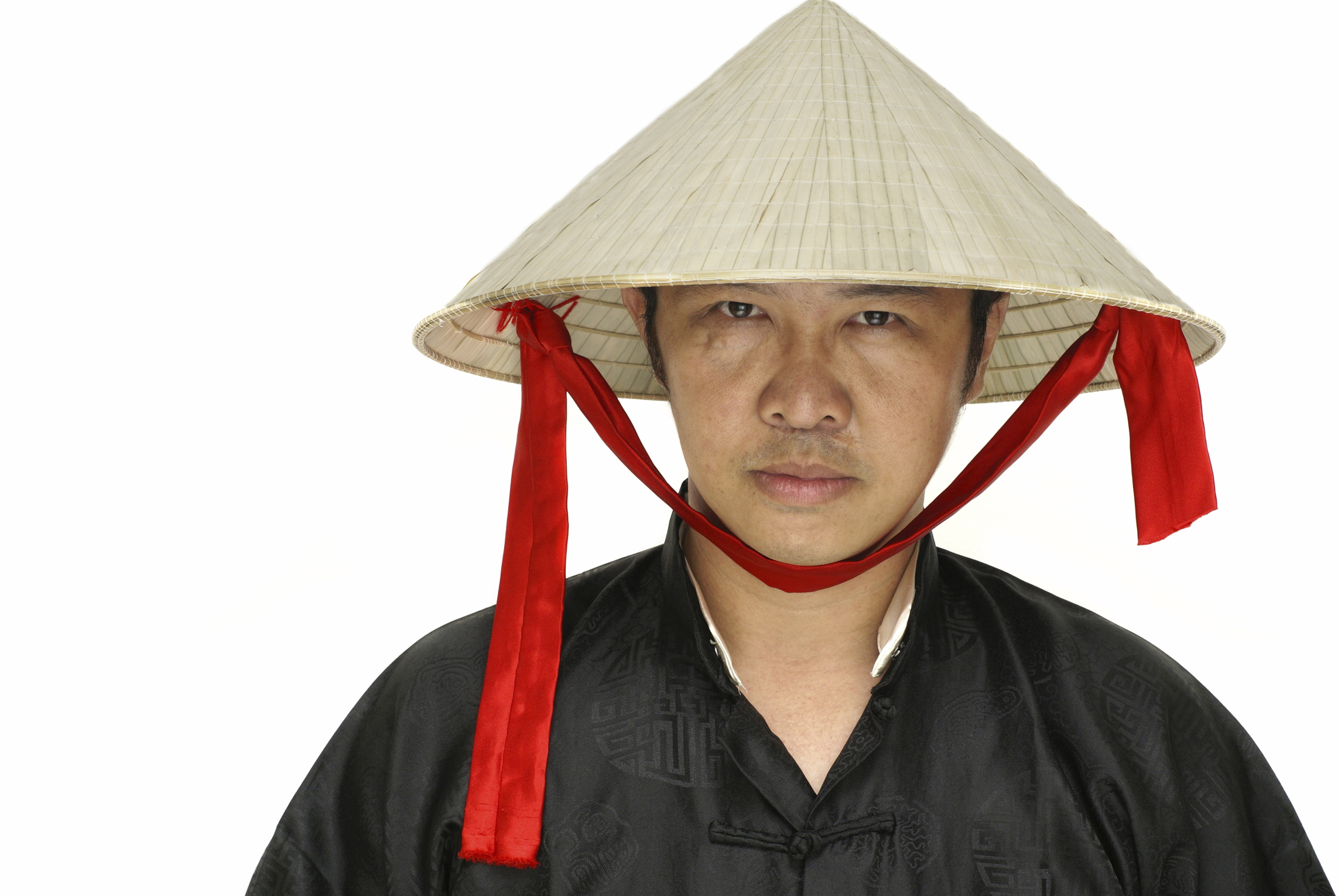This a simple style of conical hat originating in East, South and Southeast Asia. Such conical hats are used particularly in Bangladesh, Bhutan, Cambodia, China, India, Indonesia, Japan, Korea, Malaysia, Myanmar, Philippines, parts of Russian Manchuria and Vietnam.
This style of hat is used primarily as protection from the sun and rain. Many types of plant material are used for producing them: e.g. bamboo, palm leaf, sedge or straw. When made of straw or matting, the hat can be dipped in water and worn as an impromptu evaporative-cooling device.
The hat can be loosely or closely woven, plain or painted. It is kept on the head by a cloth (often silk) chin strap. The style is very old with the first Vietnamese nón lá hats being from 3,000 years ago.
The English names for this style of headwear varies greatly: bamboo hat, paddy hat, rice hat, sedge hat, Raiden hat and sometimes coolie (from the Chinese Ku li) hat.
Production
Asian conical hats are still made by artisans throughout Asian. The method of production may vary but the one used in Chuong Village, Vietnam can be used as an example. The leaves for the hats are from a type of palm tree. Bright green leaves are gathered from the trees. The leaves are rubbed on sand until they are soft and then sun dried several times until they turn white. They are then further dried over a low fire, finally losing all moisture but remaining supple and uncrushed.
The round frames of the hats are made with small strips of split bamboo, artfully connected to form a smooth rim. The frame of a Chuong hat is assembled on top of a wooden mould that ensures it is the right size. Each leaf is carefully arranged to overlap and the layers are sewed together. A thin layer of oil is also spread on the hats to ensure that they shed water. The final stage is making the straps of the hats, giving them a splash of colour.
See (a) Vietnam: Kinh (Viet) woman (I) & (II) and (b) China: Han Chinese fisherwoman.
References
http://www.ehow.com/how_6947862_make-chinese-straw-hat.html
http://www.haivenu-vietnam.com/travel-blogs/hanois-conical-hat-village
https://en.wikipedia.org/wiki/Asian_conical_hat
https://www.vietnamonline.com/culture/non-la.html
Pictures
1) Plain Chinese conical hat – http://www.taghats.com/wp-content/uploads/2015/05/Chinese-Conical-Hat.jpg
2) Buddhist monk hat – http://www.cs.montana.edu/~ian.hixson/project/images/buddhist_monk_hat.jpg
3) Colourful hats – https://thumbs.dreamstime.com/x/colorful-asian-conical-hats-23979795.jpg
4) Vietnamese ladies in nón lá hats – https://babogenglish.files.wordpress.com/2016/07/b8d76-nonla3.jpg
5) Thai conical hats of farmers and fishermen – Bas relief at Phuket Botanical Gardens, Chalong, Phuket, Thailand
6) Hat-making frames (Vietnam) – http://www.haivenu-vietnam.com/travel-blogs/hanois-conical-hat-village
7) Hat-making: finished product (Vietnam) – http://www.haivenu-vietnam.com/travel-blogs/hanois-conical-hat-village







